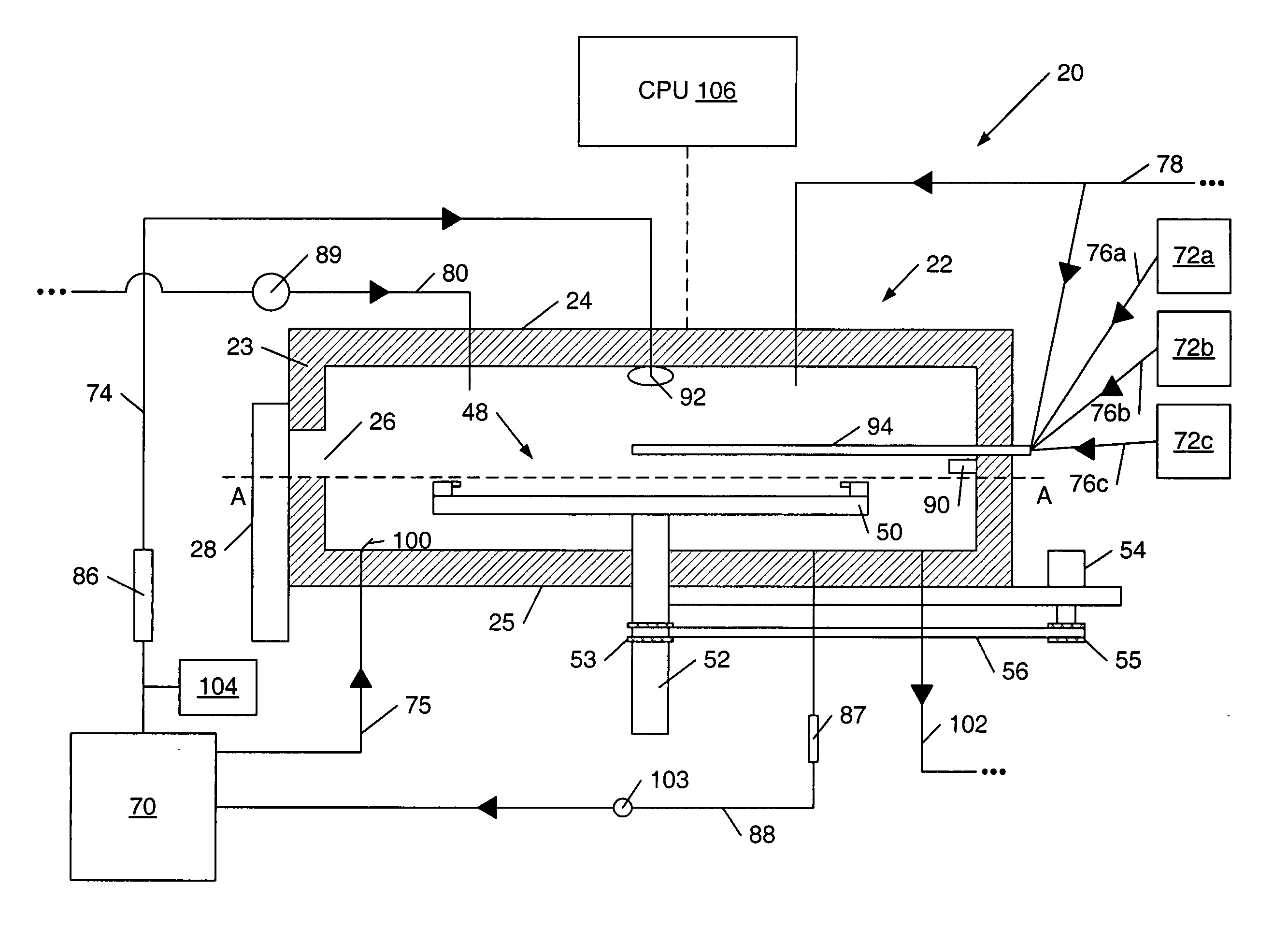Microelectronic fabrication system components and method for processing a wafer using such components
a technology of fabrication system and microelectronic topography, which is applied in the direction of resistive material coating, cable/conductor manufacturing, chemical vapor deposition coating, etc., can solve the problems of poor catalytic activity, poor quality metal deposits, and exposure of the substrate surface to air during the transfer, so as to reduce material and waste disposal costs, prevent oxidation, and reduce the effect of oxidation
- Summary
- Abstract
- Description
- Claims
- Application Information
AI Technical Summary
Benefits of technology
Problems solved by technology
Method used
Image
Examples
Embodiment Construction
[0068] Turning now to the drawings, exemplary embodiments of systems and methods for processing a microelectronic topography are illustrated in FIGS. 1-18. More specifically, FIG. 1 illustrates an exemplary embodiment of a system that may be used for processing a microelectronic topography, while FIGS. 2a-10 show detailed illustrations of particular components of the system in FIG. 1 as well as methods of using such a system. Furthermore. FIGS. 11-18 illustrate a method for processing a microelectronic topography which may be conducted using the system shown in FIG. 1 or any other system adapted for such a method. It is noted that the plurality of component designs and methods illustrated in FIGS. 1-18 are not co-dependent and, therefore, may not necessarily be employed together. In particular, the system described herein may be constructed to include any combination of the components described in reference to FIGS. 1, 2a-2c, 4, 6a-6d, 8a, 8b, and 9a-9c. In addition, the methods for...
PUM
| Property | Measurement | Unit |
|---|---|---|
| deposition rate | aaaaa | aaaaa |
| speed | aaaaa | aaaaa |
| speed | aaaaa | aaaaa |
Abstract
Description
Claims
Application Information
 Login to View More
Login to View More - R&D
- Intellectual Property
- Life Sciences
- Materials
- Tech Scout
- Unparalleled Data Quality
- Higher Quality Content
- 60% Fewer Hallucinations
Browse by: Latest US Patents, China's latest patents, Technical Efficacy Thesaurus, Application Domain, Technology Topic, Popular Technical Reports.
© 2025 PatSnap. All rights reserved.Legal|Privacy policy|Modern Slavery Act Transparency Statement|Sitemap|About US| Contact US: help@patsnap.com



